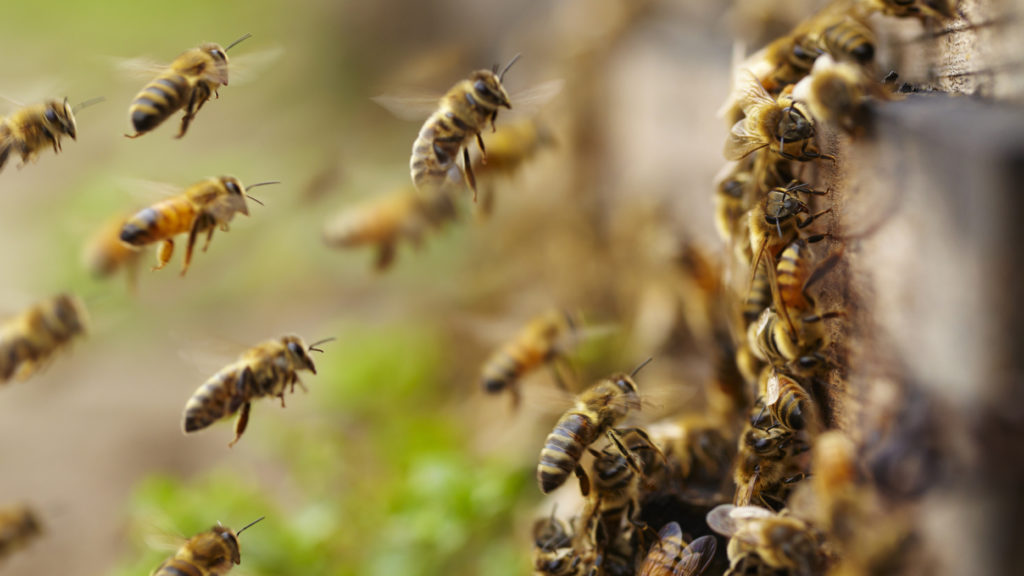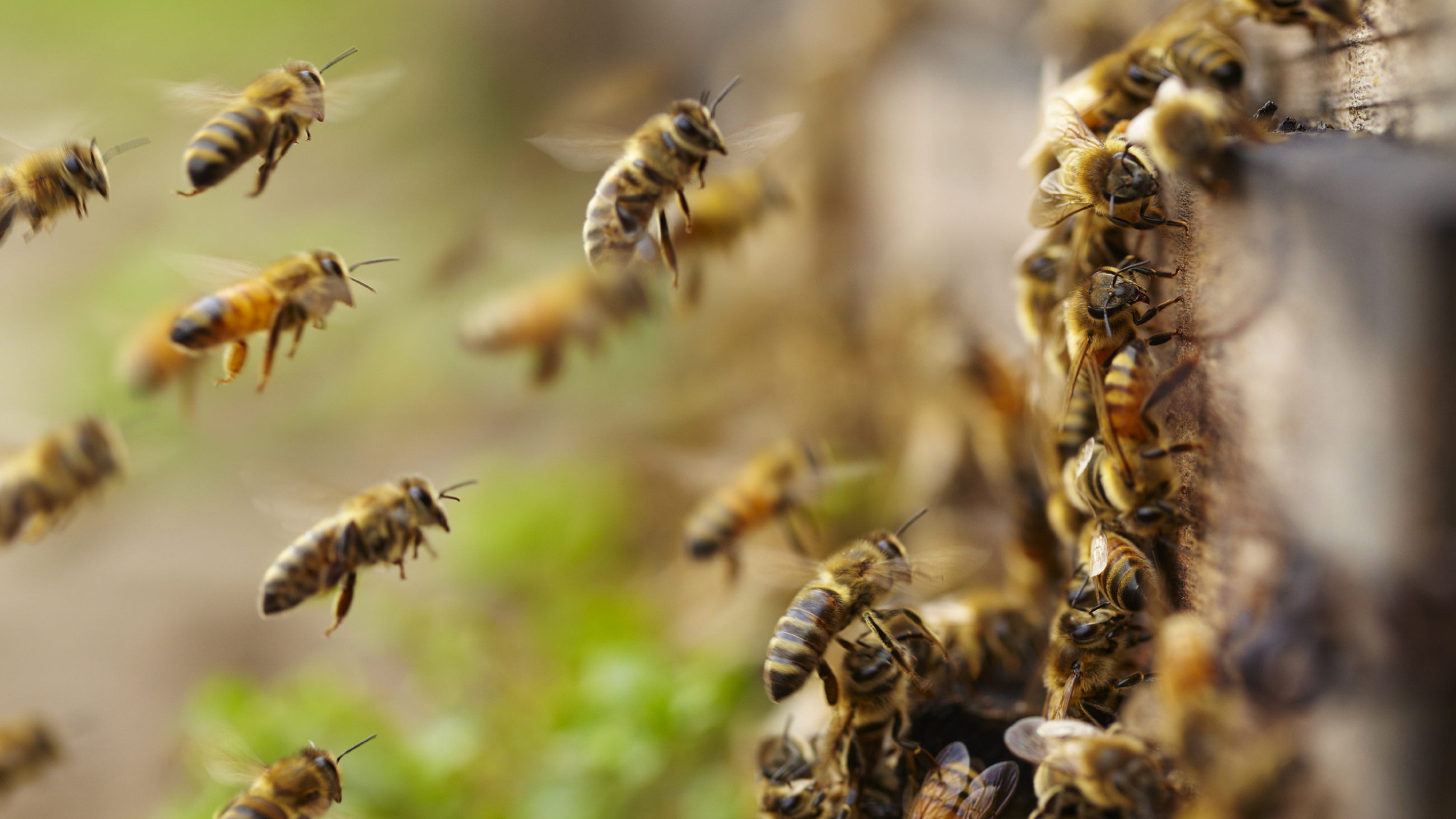Evolving a Better Honey Bee
Just what’s killing off honey bees in such worrying numbers remains, for the most part, a mystery, but one thing is clear: The insects — primary pollinators of fruits and vegetables and a key part of the global food web — face a lot of potential stressors. From bacterial infections and fungal diseases to climate change and pesticides, life is tough these days for honey bees, as well as the industries that rely on them.

Commercial honey bees are vulnerable to a parasitic mite. Their feral cousins? Not so much. (Visual by iStock.com)
Last year, bee keepers reported a 44 percent die-off of their managed hives, and while the precise combination of culprits is still unclear, one known and likely substantial contributor is a minuscule mite with the foreboding name varroa destructor — a lethal parasite that can spread quickly among colonies.
And yet there is one potential bright spot in the ever-troubled world of bees: It seems that wild honey bees — cousins to controlled colonies — may have evolved some protections against varroa.
Last year, a team of researchers looked at the genetics of honey bee specimens that had been collected in 1977 and compared them to unmanaged hives from 2010. Predictably, researchers saw that the wild populations of honey bees had crashed when the varroa mite — which reproduces exclusively in honey bee colonies — reached the U.S. in 1980. But they also saw that the wild populations had subsequently recovered, suggesting that wild bees had evolved resistance to the mites and its associated maladies in only 33 years.
This wild resistance isn’t new, according to Thomas Seeley, an entomologist at Cornell and co-author of the study. Although it hadn’t been seen in the U.S. before, similar changes occurred in Africa and Central America, where even well-managed hives had been forced to evolve. “When it got into Africa, people were thinking ‘Oh my goodness, it’s going to wipe out the colonies, what can we do?’” said Seeley. “But they couldn’t do anything because they couldn’t afford the treatments, and now, nobody cares. They don’t worry about the mite at all.”
Of course, natural selection comes at a cost. In order for the managed hives in North America to develop the same kind of resistance that researchers see in wild populations, a lot of bees would need to die and leave behind only those rare individuals with disease-resistant mutations. In time, those mutants can propagate and establish hardier populations. Seeley says that they have identified which genes have changed — suggesting a possible answer to what Diana Cox-Foster, a pollinating-insect researcher at the USDA, calls the “million dollar question.”
“What makes these bees so much better when they get parasitized by varroa? Why is that?” said Cox-Foster. “If we could figure that out, that would allow for a great deal of selection on different genetic traits.”
Some researchers are now trying to artificially select for more resistant bees, but Seeley says that it might be a futile effort unless your insects are isolated. When you have hundreds or thousands of colonies — like many commercial bee keepers do — any genetic mutations tend to get diluted in the larger population. Unless you can artificially select the majority of hives for resistance, it’s like trying to sweeten a pool with a teaspoon of honey.
“I am optimistic,” Cox-Foster said when asked about the fate of honey bees, “but it’s still not a great situation.”










